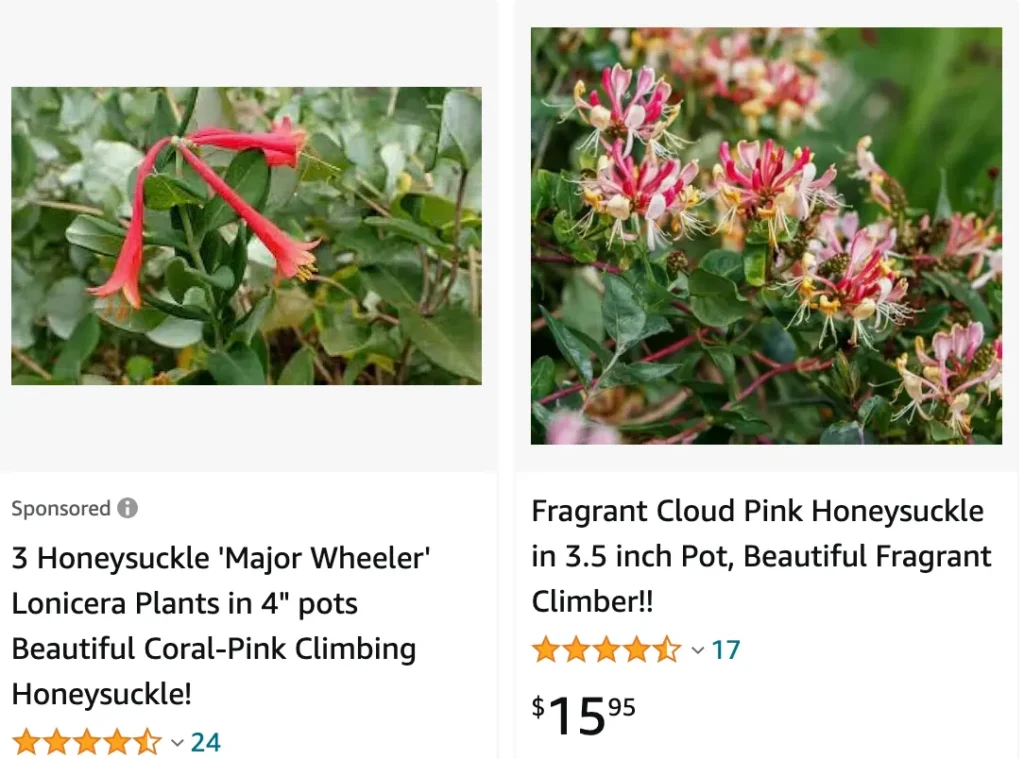
What is Lonicera Hispidula?
As a passionate gardener, I’m always on the lookout for new plants that add beauty and ecological value to my backyard haven. Recently, I stumbled upon the California Honeysuckle (Lonicera hispidula), and let me tell you, it’s quickly become a favorite. This native gem boasts a cascade of delicate pink blooms in spring, followed by vibrant red berries in fall, making it a feast for the eyes throughout the season. But beyond its aesthetics, the California Honeysuckle offers a haven for pollinators like butterflies, bees, and hummingbirds, buzzing with life and adding a touch of magic to the garden.
162 Species in Genus Lonicera
Where to Find Your California Honeysuckle?
Sourcing this delightful vine can be a breeze. Local nurseries specializing in native plants often carry Lonicera hispidula. These nurseries not only provide healthy specimens but also support local ecosystems by promoting native flora. Another option is online retailers specializing in native plants. Just be sure to choose a reputable seller with a proven track record for healthy plants and responsible shipping practices.
How to Care for Your California Honeysuckle?
The California Honeysuckle thrives in a balance of sun and shade. Aim for an area that receives dappled sunlight for most of the day. During the hottest part of the afternoon, some shade is crucial to prevent scorching of the leaves.
When it comes to watering, this resilient vine prefers consistent moisture, especially during its establishment phase. Regular watering, particularly during dry spells, will ensure healthy growth and a vibrant display of flowers. However, avoid overwatering, as this can lead to root rot.
As for soil, well-draining and slightly acidic soil is ideal. Amending the soil with organic matter like compost can improve drainage and provide essential nutrients for healthy growth.
California Honeysuckle is a relatively low-maintenance vine, but occasional pruning can be beneficial. Prune lightly after flowering to maintain its desired size and shape. Additionally, remove any dead or diseased branches to promote healthy growth.
How to Propagate California Honeysuckle?
Propagating California Honeysuckle is a rewarding way to expand your personal stock or share this gem with fellow gardening enthusiasts. Here are two methods you can try:
- Seed Propagation: While seed propagation is possible, it can be a slower process. Collect mature berries in the fall, allowing them to dry slightly. Extract the seeds and store them in a cool, dry place for several weeks before planting. Sow the seeds in moist, well-draining soil in spring and keep them consistently moist. Germination can take several weeks to months.
- Stem Cuttings: This is a faster and more reliable method of propagation. Take stem cuttings in late summer or early fall. Select healthy, non-flowering stems with a few nodes. Cut the stems just below a node at an angle and remove the lower leaves. Dip the cut end in rooting hormone (optional) and plant the cutting in a pot filled with moist, well-draining potting mix. Keep the soil consistently moist and place the pot in a location with bright, indirect light. Rooting should occur within a few weeks.
What to Plant with California Honeysuckle?
California Honeysuckle pairs beautifully with other native plants, creating a harmonious and ecologically beneficial haven in your garden. Here are some ideas to inspire your garden design:
- California Lilac (Ceanothus): This vibrant flowering shrub offers a stunning contrast with the honeysuckle’s pink blooms, creating a colorful spectacle in spring.
- Coffeeberry (Rhamnus californica): This evergreen shrub provides year-round interest and offers valuable food for native birds.
- Deer Grass (Muhlenbergia rigens): This ornamental grass adds a touch of texture and movement to the garden and requires minimal maintenance.
By incorporating these native companions, you can create a thriving ecosystem that attracts a variety of pollinators and creates a vibrant tapestry of life in your backyard.
The California Honeysuckle (Lonicera hispidula) is more than just a beautiful addition to your garden; it’s a bridge to a healthier ecosystem. So, embrace this native wonder, nurture it with care, and witness the magic it unfolds in your own backyard haven.
If i die, water my plants!



